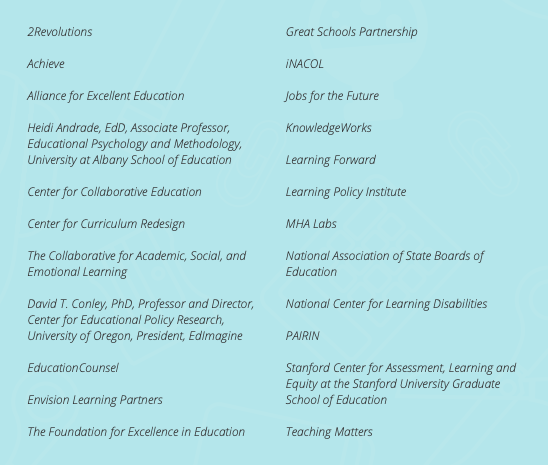This is Part 1 in our three-part blog series illustrating PAIRIN’s alignment with the Ten Principles for Building a High-Quality System of Assessments. Check out Part 2 and Part 3 here!
To show our support and commitment to advancing equity in college and career readiness opportunities for all, PAIRIN has recently become a signatory of the Ten Principles for Building a High-Quality System of Assessments.
The Ten Principles represent a collaborative effort led by Jobs for the Future and endorsed by experts spanning the education, research, workforce and policy fields:

WHAT ARE THE TEN PRINCIPLES?
Taken together, the principles outline an approach for education leaders to build and sustain a system of assessments which facilitates the measurement of skills (academic and nonacademic) necessary for success in college, career, and life.
WHY DOES PAIRIN SUPPORT THE TEN PRINCIPLES?
The Principles represent decades of research into designing systems of assessments as well as efforts to develop college and career readiness for all learners. Given PAIRIN’s deep commitment to (1) effective assessment; (2) the advancement of college and career readiness; and (3) equity in access and opportunities for all, signing on to support and promote these principles was an easy decision.
HOW DOES PAIRIN FIT INTO THE TEN PRINCIPLES INITIATIVE?
The Ten Principles publication clearly justifies the need for a cohesive, well-rounded system of assessment which encapsulates all assessment activities occurring within an educational organization. This includes everything from simple quizzes written by individual educators, to common end-of-unit and end-of-course assessments within schools or districts, to higher-stakes state testing, and everything in between.
The Ten Principles focus on large-scale systems of assessment. As signatories, we are committed to helping those who use our assessments think through how to properly situate them within these larger systems. As such, read Part 2 and Part 3 of this three-part blog series to see how PAIRIN’s existing tools support this initiative.
